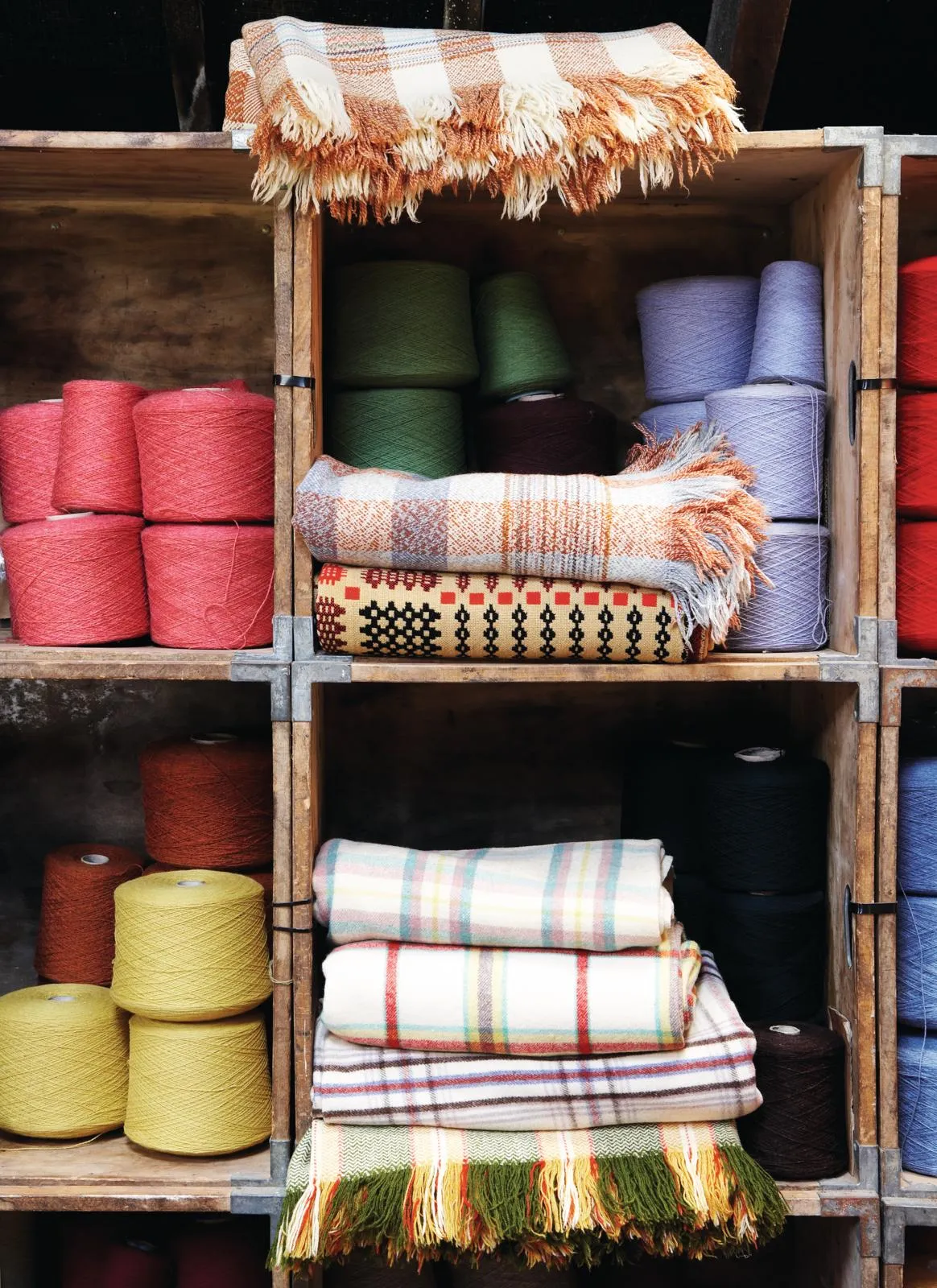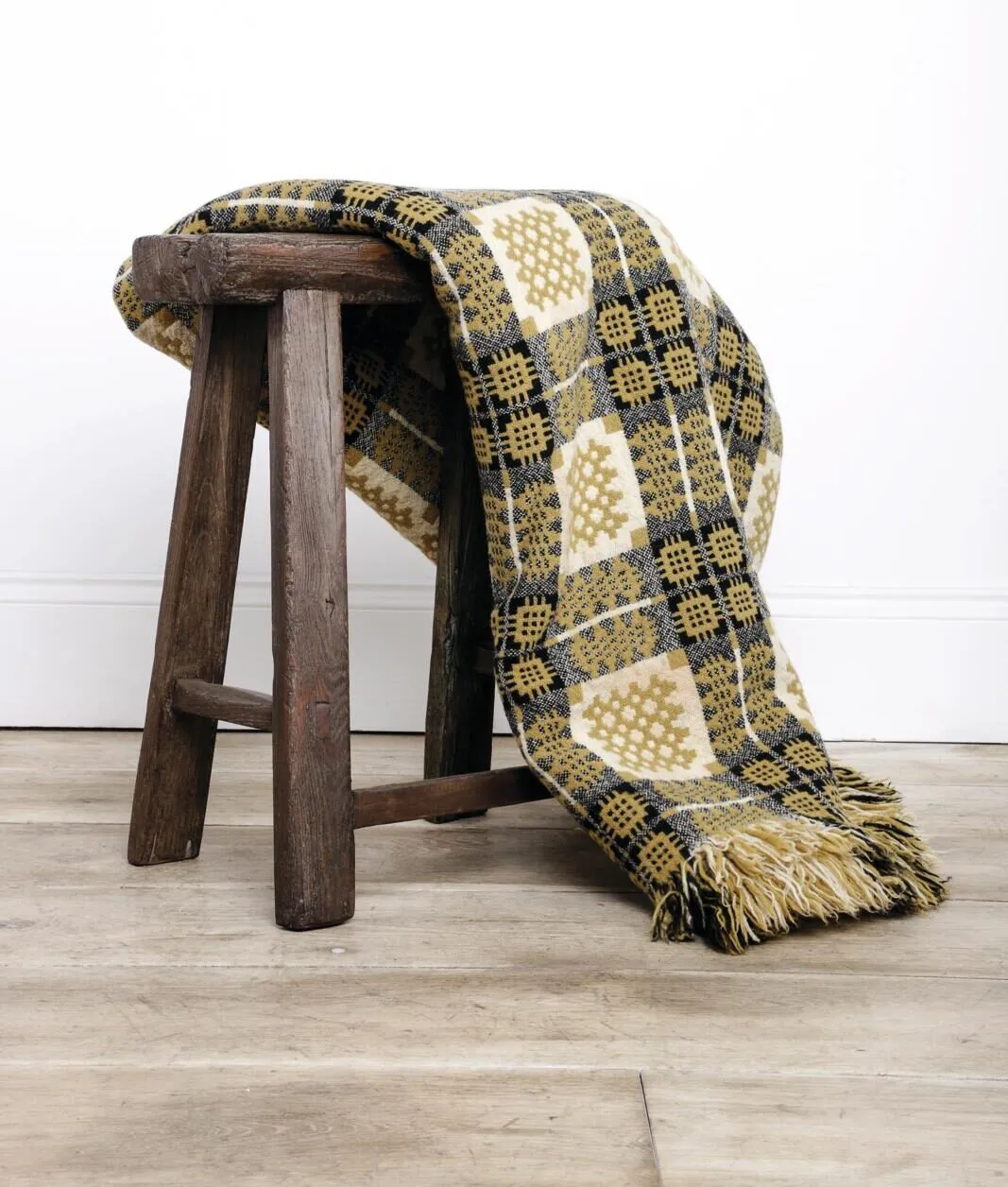Is there anything as simultaneously comforting and stylish as wool? In the frenetic modern world it’s little wonder that many of us are turning to this accessible, durable fibre to enhance our homes. From contemporary patterned flooring and fabrics to antique tapestries, rugs and Welsh blankets with a story to tell, wool adds welcome warmth and texture to a room. Versatile, renewable and an essential layer to any scheme, our love affair with wool has been enjoying fresh fervour in recent times.
It’s a romance with a long history. Humans have cherished wool’s strong, insulating qualities for thousands of years – evidence suggests that primitive use of the fibre existed as far back as the Stone Age. Early tribes are thought to have spun the wool by hand, eventually developing tools to ease the process.
It was first used for clothing, but its use in the home goes back a surprisingly long way too – the earliest wool carpet, the ‘Pazyryk rug’ was discovered in Siberia and dates back to around 500-300BC. It was coloured using dye from plants and insects, and remains remarkably vibrant today.

Over time, the selective breeding of sheep improved the quality of wool, while the ease of transporting the animals meant the benefits of the material spread quickly. It was around the start of the Bronze Age (1900BC) that Britain’s wool industry began to develop. Basic wooden spindles and looms were used to spin and weave the wool, which was plucked from sheep using a bronze comb.
When the Romans invaded (55BC), wool production was thriving in Britain and, by medieval times, it was big business. From the 13th to 15th centuries raw wool was the driving force of the economy and key centres included West Yorkshire, East Anglia and the West Country.
Wales has also long been a major centre for wool production since sheep were first introduced to its hills, and Welsh blankets made using a double-weave construction are still in demand. ‘Wool’s natural, breathable qualities make it an excellent insulator,’ explains Jane Beck of Jane Beck Welsh Blankets. It is this quality that made the blankets practical on cold nights, but they also had aesthetic appeal, often worked in bright colours and patterns.

Wool holds strong colour well (and can be dyed easily), which is one reason it has played such an enduring role. Picture Persian ornamental rugs, or the ancient tapestries that provided the double benefit of warmth and a means of telling a story. Today, the intricate French and Flemish tapestries that flourished from the 15th century are the most famous, but the form enjoyed a 20th-century resurgence, led by post-war artists like Jean Lurçat, whose designs stirred fresh interest in the art.
Many textile-based antiques are in increasing demand today. ‘In terms of collectables, wool-stitched tapestries, usually on a linen ground, and as early as possible, with the colours still vibrant, have retained their popularity and value,’ explains Bunny Campione, miscellaneous expert for the Antiques Roadshow.
Even some vintage toys are made valuable by virtue of their use of wool. ‘I have a toy rabbit covered in lambswool, made by the German firm Steiff in 1903,’ says Bunny. ‘It is valuable and rare simply because it is covered in wool rather than the more common toy rabbits of that time, which were covered in a cotton-based fabric.’
As for cost, Welsh blankets represent an accessible buy, averaging less than £300 for vintage examples, while antique rugs can reach several thousand pounds. (Turn to page 94 for more on collecting Welsh blankets.) The most expensive was a 17th-century Persian rug sold through Sotheby’s New York, making $33.7m in 2013.
Wool’s myriad qualities and versatility are helping to fuel its current popularity. ‘We now see a resurgence in interest for sustainable and natural fibre,’ explains Jane. ‘There is a premium market for British made, and a nostalgic vintage market created by harder economic times.’ It also helps that wool is easy to incorporate into our homes, whether as a starting point for a scheme or to complement existing decor. ‘Wool is very much on trend for the foreseeable future!’ says Jane.
